The power supply system of the American military: some facts and features
Surely many readers know or have heard about the nutrition of the American military. This article contains and summarizes the main facts on this issue, briefly outlines a comprehensive view of this large and interesting topic.
From the history of the power supply system of the American military
Even at the dawn of the emergence of the United States, during the struggle of the American colonies for independence from Britain, the problem of feeding the detachments of armed rebels, which began to be called the Continental Army, became acute.
Lack of calories, vitamins and fresh food led to the fact that many fell ill with scurvy and other diseases. Some of them died. This greatly undermined the combat capability of the new army. Therefore, in 1775, the Second Continental Congress adopted the first documented decree on the need for a varied and sufficiently high-calorie diet for the military personnel of the Continental Army. The products and the norms of their issuance were listed. The structures of the new government and personally by General George Washington took concrete measures to supply the troops with the necessary types of food. Since then, caring for the good nutrition of their military has become an important part of the military development of this state.
At the beginning of the 19th century, the young and still rather small American navy had the best food supply in the world. Among other things, one of the first in large quantities began to receive canned foods (meat, oysters, vegetables, fruits). They were delivered in tightly sealed ceramic vessels and kept in boxes filled with sawdust.
During the civil war, the northerners 'army was better supplied with food than the southerners' army. The latter was very hungry, which was one of the reasons for her defeat.
Until the early 20th century, the American military continued to suffer from irregular supplies and stale food. Together with unsanitary conditions, this was the cause of numerous deaths from poisoning and epidemics, especially during the Civil War and the Spanish-American War (1898).
In 1918, during the First World War, the Food and Nutrition Department was created in the US Army Medical Department to introduce a scientific approach to the organization of food for the American military. The first survey carried out by this department showed that the diet of military personnel is excessive in calories and not balanced in composition (in particular, it contains too much fat). Based on these results, a scientifically based diet was developed.
In the interwar period, research in the field of military nutrition in the United States was practically not carried out.
In 1937, by order of the military, Hershey developed a special high-energy bar that contained chocolate and oatmeal. It did not melt at high temperatures, which was important in the tropics. The bar was designed to quickly saturate the soldier if he did not have the opportunity to eat in the usual way.
From three bars, an "emergency" daily ration of 1800 kcal was created. It is called diet D.
To prevent the soldiers from quickly eating all the chocolate, US Army Quartermaster Colonel Paul Logan demanded that the taste of the bar be "not much better than the taste of boiled potatoes." However, Hershey overdid it a little, and the taste of the "war chocolate" turned out to be quite unpleasant, and it was also very hard: it was impossible to break off and was extremely difficult to chew. The soldiers disliked it and often threw it away immediately upon receipt. In this regard, in 1943, a "tropical bar" was created with an improved flavor, but it was still unpleasant to eat.
In 1957, the composition of the "tropical bar" changed dramatically: it became tastier and cheaper. Oatmeal disappeared from him, but he still did not chew well. By this time, he had already ceased to play a significant role in the diet of the American military.
From three bars, an "emergency" daily ration of 1800 kcal was created. It is called diet D.
To prevent the soldiers from quickly eating all the chocolate, US Army Quartermaster Colonel Paul Logan demanded that the taste of the bar be "not much better than the taste of boiled potatoes." However, Hershey overdid it a little, and the taste of the "war chocolate" turned out to be quite unpleasant, and it was also very hard: it was impossible to break off and was extremely difficult to chew. The soldiers disliked it and often threw it away immediately upon receipt. In this regard, in 1943, a "tropical bar" was created with an improved flavor, but it was still unpleasant to eat.
In 1957, the composition of the "tropical bar" changed dramatically: it became tastier and cheaper. Oatmeal disappeared from him, but he still did not chew well. By this time, he had already ceased to play a significant role in the diet of the American military.
During and after World War II, specialized state scientific laboratories, together with the military departments, conducted dozens of studies aimed at developing healthy and high-calorie diets. During this period, the first individual food rations (IRP) appeared, which were packaged sets of ready-made meals and were intended primarily for paratroopers and other highly mobile forces.
At different times in the United States, there were different structures at the Academy of Sciences, the ministries of health, agriculture and defense, which were engaged in research in the field of military nutrition.
In 1958, the United States Army Medical Research and Nutrition Laboratory was created through the merger of two research centers. In 1973, it was reorganized into the "Research Institute of the Army. Letterman ”(LAIR).
In 1955, the Inter-Agency Committee on Nutrition for National Defense (ICNND) was established.
It should be noted that these research structures, like their predecessors, dealt with the nutritional problems of not only the military, but also the civilian population. For example, the results of ICNND research led to the creation of food aid programs for starving Americans, mothers, babies and schoolchildren in the first half of the 1970s.
In the second half of the 1970s, LAIR improved methods for measuring the caloric content of food and its ecological purity, conducted in-depth studies of the effect of various vitamins on the human body, and also developed scientifically based norms for the consumption of water and minerals.
Despite obvious successes, in 1980, by the decision of the Army and Congress, LAIR was closed, and its functions were transferred to the "Western Research Center for Human Nutrition" of the Ministry of Agriculture. At the same time, a number of military centers continued research in the field of nutrition.
In 1982, the Committee on Military Nutrition Research (CMNR) of the Food and Nutrition Board (FNB) was established. The committee has made many recommendations for the Department of Defense in the area of nutrition.
In 1986, the US Army Environmental Medicine Research Institute established a new nutritional research unit, which later became the Military Nutrition Unit (USARIEM). It continued in-depth testing of a variety of diets and, since 1986, has become the leading executive agency for scientific and applied research for the US Department of Defense's Combat Nutrition and Research Program (CFREP).
The joint work of USARIEM and the Pennington Center for Biomedical Research has provided new knowledge about the energy and water needs of people working in extreme conditions (including high altitude, high and low temperatures). A comprehensive revision of the menu was proposed, programs were developed to correct the weight of the soldiers.
The research findings from this alliance also helped create the HOOAH! Energy Bar! and ERGO energy drink.
In the 1990s, studies were conducted on the effect of nutrition on immunity during intense physical exertion. Based on their results, the nutrition programs for the training of rangers were revised.
Until now, these two organizations, working together, continue fruitful research in the field of military nutrition.
Diet in the modern U.S. military
According to the modern classification, the food of the US military is divided into three categories:
"Diet A"
Good nutrition. Consists of freshly prepared hot and cold dishes from fresh and frozen products. Provides food in a stationary or prefabricated canteen, and can also be delivered to field positions in food containers.
"Diet B"
Meals from dishes prepared using canned food and semi-finished products. Used in the field.
MRE (Meal Ready-to-Eat)
IRP. A daily set of fully ready-to-eat products of long storage, which are packaged in separate packages according to three meals a day. Has a limited number of standard options. It is used in cases when the organization of general catering is impossible.
Food in American military canteens
Canteens in the US military have a wide variety of dishes. The variety of the menu takes into account different preferences, as well as the characteristics of ethnic and religious groups, if the number of their representatives is 10% or more.
Soldiers and officers eat the same food in the same canteen. But the soldiers eat for free, and the officers have to pay for themselves. At the same time, prices there are several times lower than in civilian catering establishments. In addition, fixed prices are set for individual meals, and they do not depend on the type of food and their quantity. Soldiers can refuse food in the military canteen and receive appropriate monetary compensation, but given the low prices, this option is clearly unprofitable.
Military personnel receive three meals a day, on weekends and holidays, one more meal or additional meals is added to it.
Recently, healthy eating has been widely promoted among the American military. In this regard, the dishes on the menu are color-coded according to the degree of health benefits.
Conclusion
Nutrition is a matter of great importance in the US Armed Forces, due to which its quality and availability are at a very high level.
The quality of food in the canteens of American military units and ships is one of the first in the world. The diets of military personnel in the United States are formed on the basis of scientific research. The work of a number of specialized state structures ensures the constant improvement of the military supply system in this country.
- Valery Beloyar
- US Army
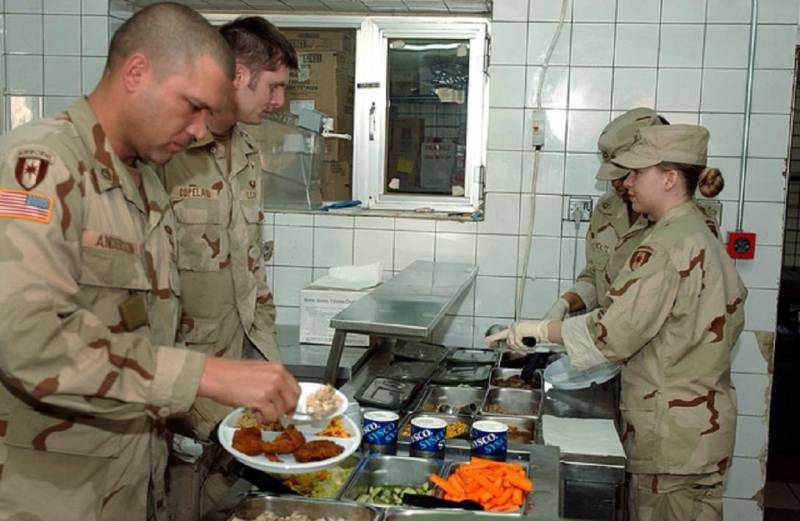
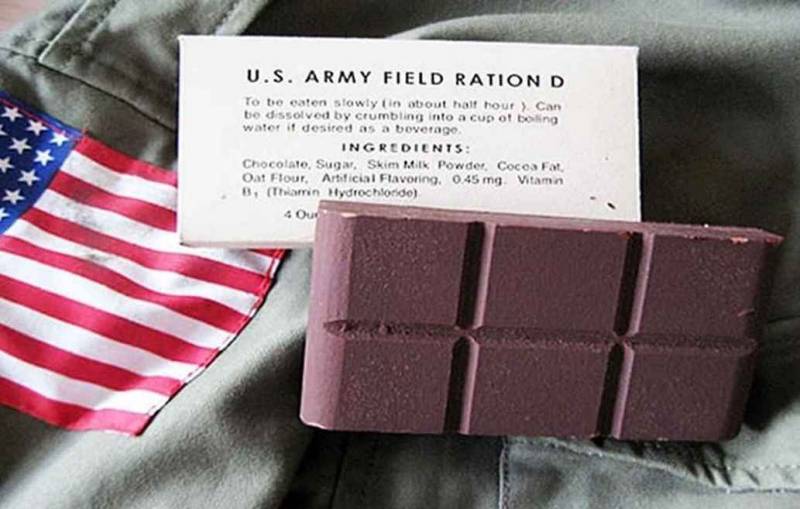
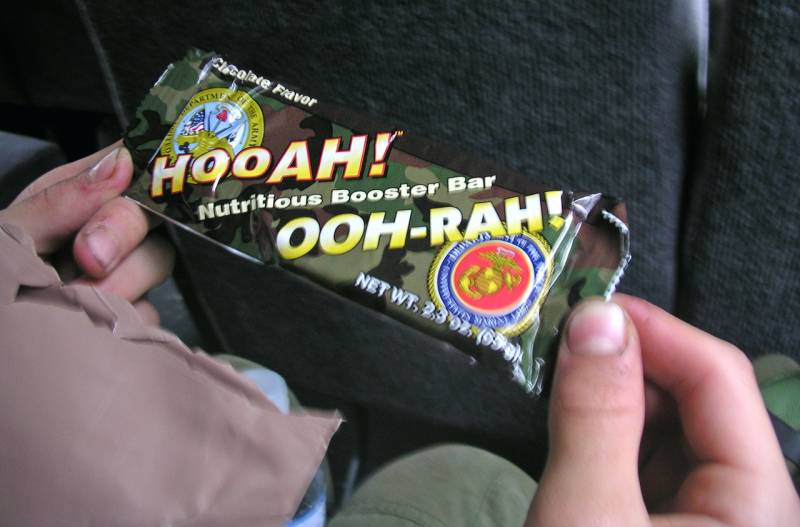
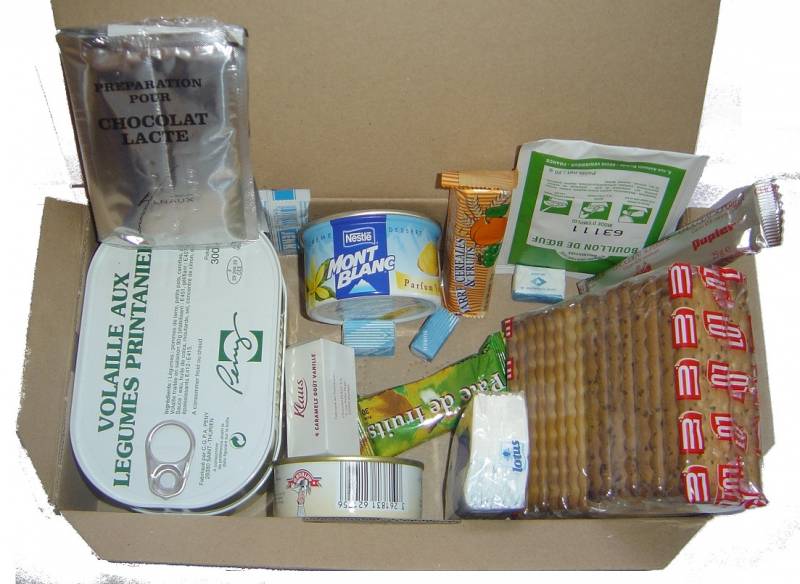
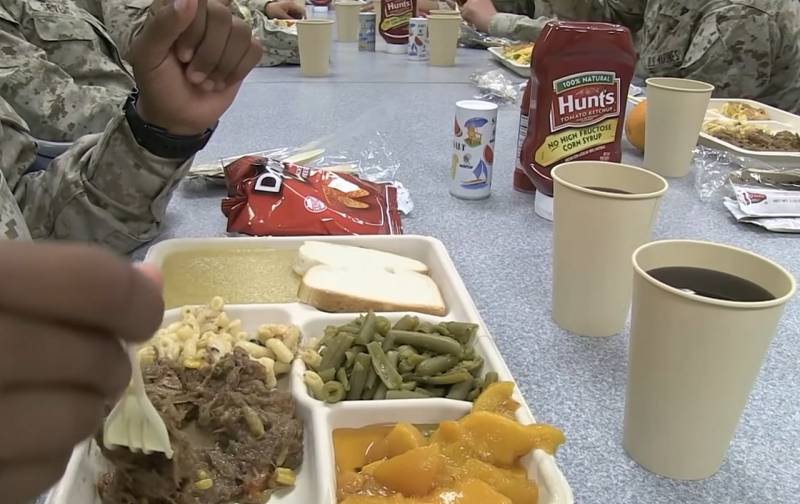
Information